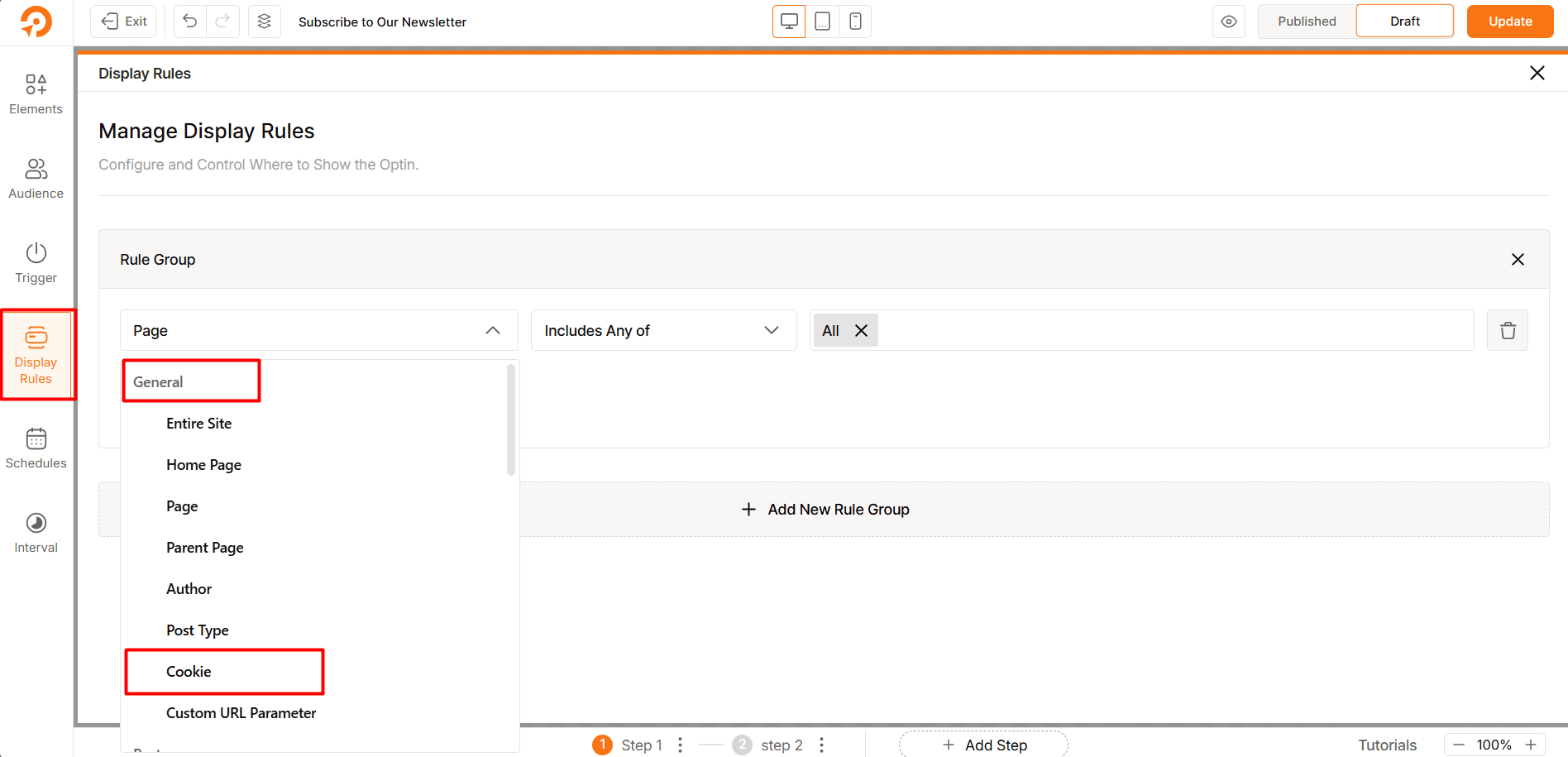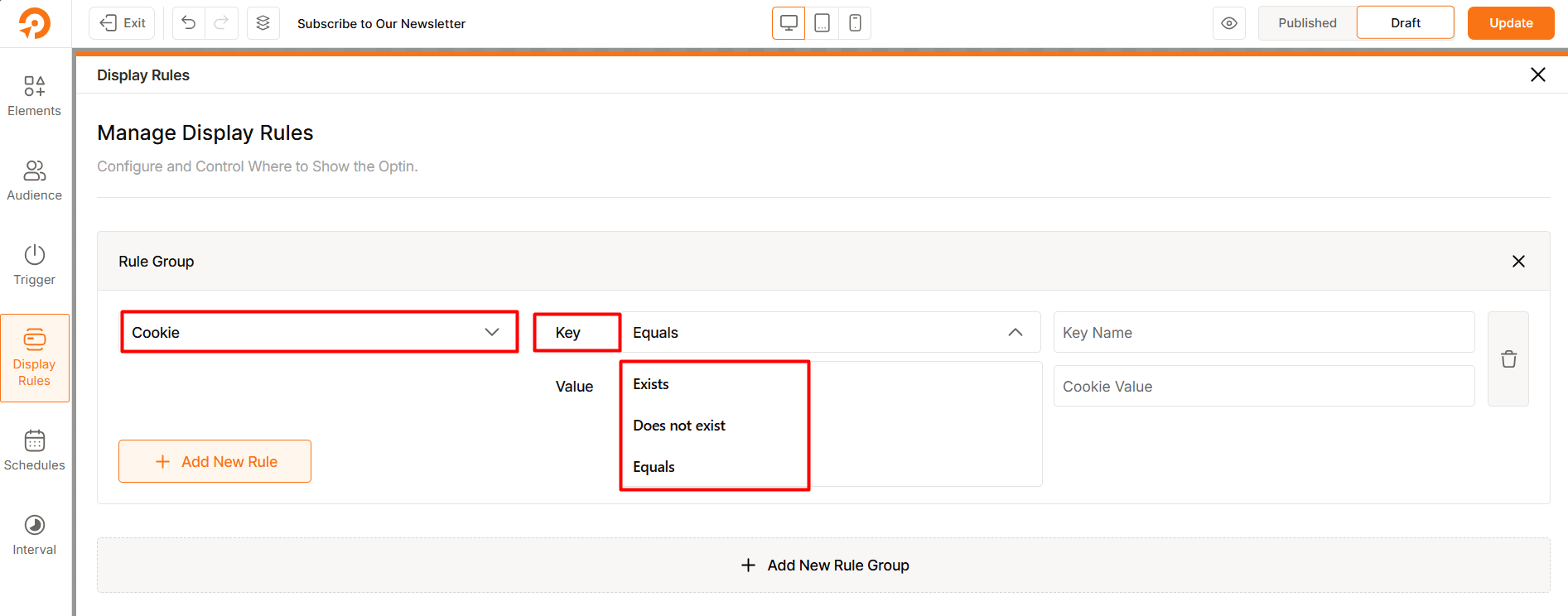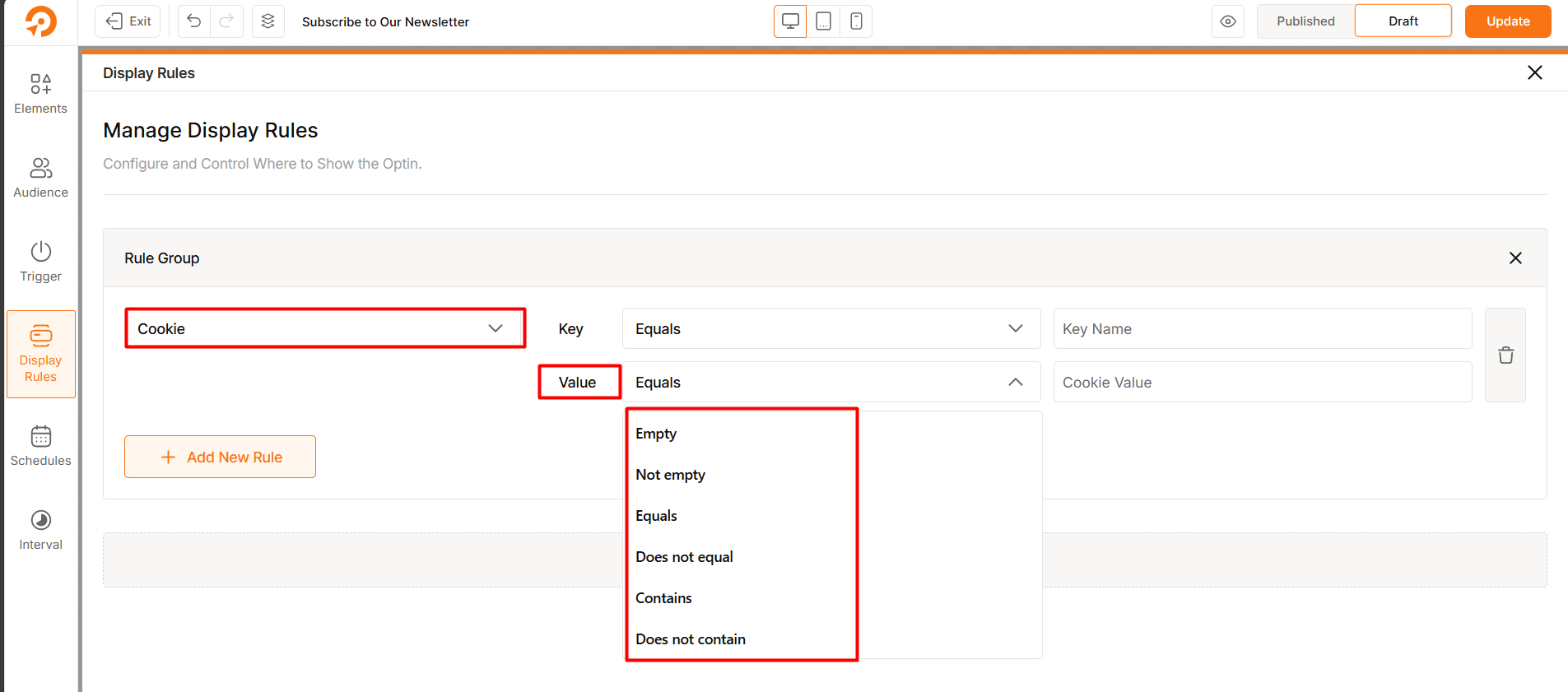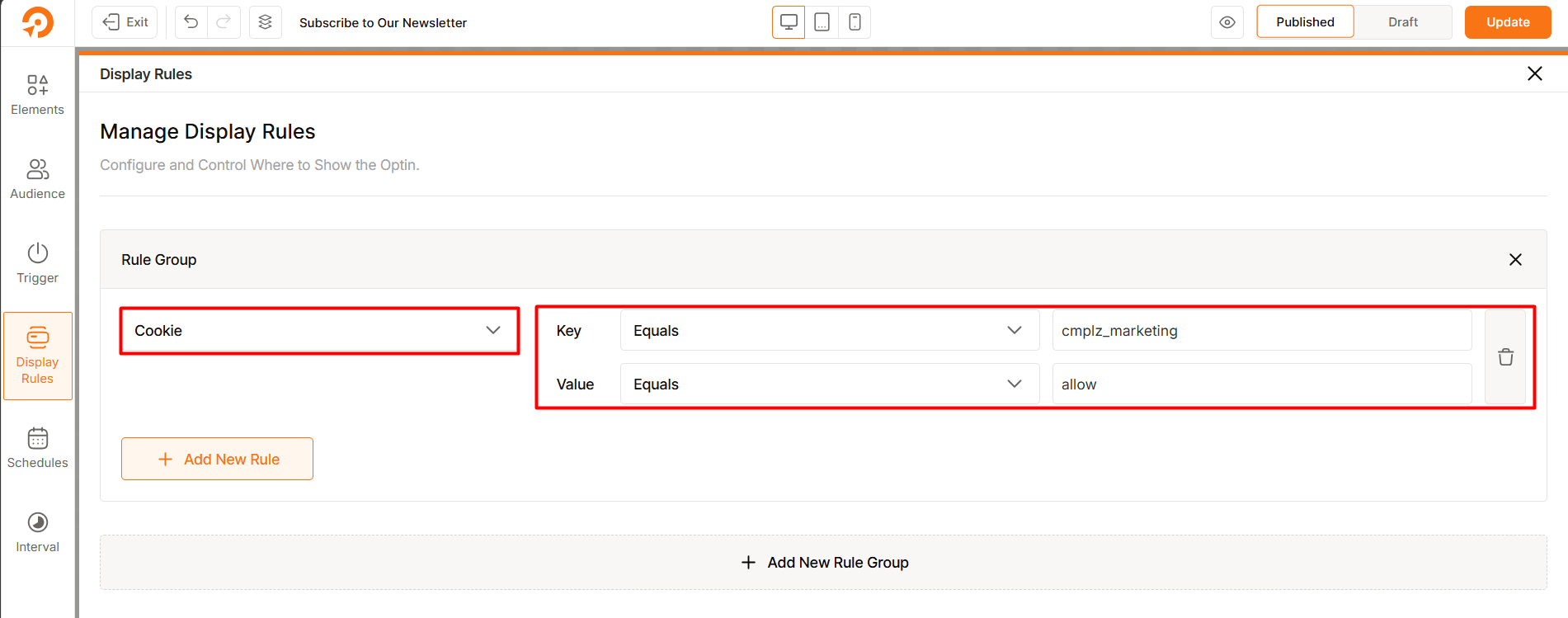WowOptin’s Cookie Targeting allows you to show or hide campaigns based on the cookies stored in a visitor’s browser.
Every cookie has two parts: a key and a value, written as
key=value.The key works like a label, and the value holds the data. For example, a cookie might look like
country=us, where “country” is the key and “us” is the value.
In practice, cookies store many kinds of simple information. For example:
loggedIn=true→ remembers if you’re signed in.theme=dark→ saves your preference for dark mode.cartItems=3→ keeps track of how many products are in your shopping cart.
Websites often store multiple cookies at the same time. Together, they help create a smoother experience by remembering who you are, what you like, and what you were doing the last time you visited.
Quick Look: What are Cookies?
How to Set Up Cookie Rules
The Cookie Targeting feature in WowOptin is found inside the Display Rule section. When setting up a campaign, you can define these rules from the Display Rule tab.
Steps to configure:
- Go to the Display Rule tab.
- Under the General Category, select the Cookie option.
- Set the Key and Value operators based on your targeting needs.

The following operators are available for Key and Value:
Key Operators
- Exists → The cookie is present in the browser.
- Does not exist → The cookie is not present.
- Equals → The cookie name matches exactly

Value Operators
- Empty → The cookie has no value.
- Not empty → The cookie has some value.
- Equals → The cookie value matches exactly.
- Does not equal → The cookie value is different.
- Contains → The cookie value includes certain text.
- Does not contain → The cookie value does not include certain text.

Once you finish, update the campaign to save the rules.
How to Use WowOptin with Cookie Consent Plugins
Cookie consent plugins control when popups or opt-ins can appear based on a visitor’s cookie choice. If you want WowOptin forms or popups to show only after visitors accept cookies, you need to integrate WowOptin with these plugins. This ensures:
- Opt-ins display only when cookies are accepted
- No opt-ins appear if cookies are declined
The exact setup may differ depending on which cookie consent plugin you use.
Quick Look: What is Cookie Consent?
Popular Cookie Consent Plugins
Quick Look: What are Cookie Consent Plugins?
- CookieYes
- Cookiebot
- OneTrust
- Complianz
- Osano
- Termly
- WPConsent
- CookieScript
- CookieHub
How to Use WowOptin with Complianz Plugin
Follow these steps to connect WowOptin with Complianz:
- Go to the Display Rule tab of your campaign.
- Choose Cookie as the rule type.
- Set the Key and Value parameter to Equals.
- Enter cmplz_marketing or cmplz_functional or both as the Key Name.
- Enter allow as the Cookie Value.

With this setup:
- If visitors deny cookies, the popup will stay hidden because the rule is not met.
- If they allow marketing or functional cookies or both (based on your chosen rules), the WowOptin popup will be shown.
FAQs
Here are some cookie specific common questions answered:
What are Cookies?
Cookies are small text files that a website saves on your phone or computer browser when you visit it.. They store simple information like your login status, shopping cart items, or site preferences.
Why do websites use cookies?
- To remember you so you don’t need to log in every time.
- To save your choices such as language, dark mode, or cart items.
- To track your activity (clicks, views, searches) to improve the site or show ads.
Example of Cookies
- You log in to Facebook once. A cookie remembers you. Next time, you open Facebook and you are already logged in.
- You add shoes to a shopping cart. Even if you close the site, the shoes stay in your cart.
- You watch a phone review on YouTube. Later, you see more phone ads on other websites. That’s cookies tracking your activity.
Types of cookies
- Necessary cookies – help the website work (like login).
- Preference cookies – remember your settings (like language or theme).
- Analytics cookies – track visitor actions on a site.
- Advertising cookies – follow you around the internet to show targeted ads.
👉 In short: Cookies are like little memory notes that websites keep on your device to remember details about you.
What is Cookie Consent?
Cookie consent is the permission a website asks from you before storing cookies on your device. Some cookies are necessary for a site to work, but others track your activity for ads or analytics.
To protect user privacy, many countries have laws (like the GDPR in Europe) that require websites to get clear permission before using non-essential cookies. That’s why you often see a banner or popup when you visit a site for the first time. It might say something like “This website uses cookies. Do you accept?”
With cookie consent, you as the visitor get control. You can:
- Accept all cookies.
- Reject cookies that are not necessary.
- Choose only certain cookies, like keeping preference cookies but blocking advertising cookies.
👉 In short, cookie consent makes sure websites are transparent about how they collect data and gives you the choice to allow or deny it.
What are Cookie Consent Plugins?
Cookie consent plugins help websites follow privacy laws and manage cookie permissions. They show visitors a banner or popup asking for consent before placing cookies on their device.
These tools make it easy for both the website owner and the visitor:
- For visitors: They give clear choices, like “Accept all,” “Reject all,” or “Customize cookies.” Visitors can decide which types of cookies they are comfortable with.
- For website owners: They make sure the site follows laws such as GDPR (Europe) or CCPA (California), which require asking permission before using non-essential cookies.
Common features of cookie consent plugins
- A banner or popup to inform users about cookies.
- Options to allow or block different cookie types (necessary, analytics, advertising, etc.).
- Automatic blocking of cookies until the visitor makes a choice.
- Logs of consent, so the site can prove compliance if needed.
👉 In short, cookie consent tools help websites be transparent about cookies and give users control over their data.